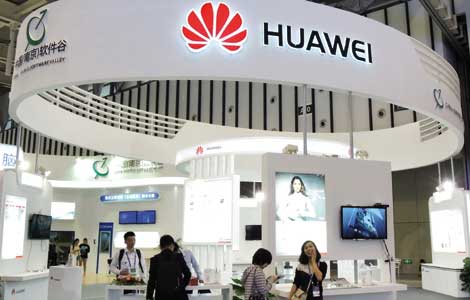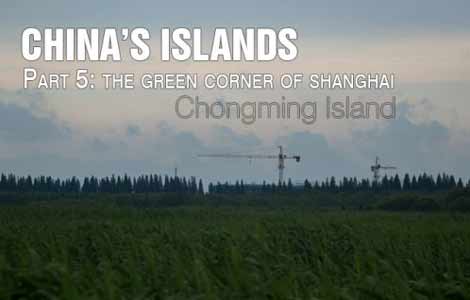Different strategic intentions
Updated: 2013-09-30 08:07
By Chen Jimin (China Daily)
|
||||||||
China and the US should enhance mutual understanding, foster greater trust and expand their common interests
Since 2009, the Obama administration has gradually adjusted the United States' strategic layout in the Asia-Pacific region. As a result, there are many different statements on the United States' strategic transformation in the Chinese media and academic field, such as "return to Asia", "pivot to Asia", "Asia-Pacific rebalance".
Many Chinese people believe that the implementation of President Barack Obama's new Asia-Pacific strategy has had a profound impact on China-US relations, mainly negative, producing greater misunderstanding and suspicion, as well as more uncertainties in the development of China-US relations. Consequently, there is a view in both countries that there will ultimately be a strategic confrontation. But is such a pessimistic outlook really the future of China-US relations? How to assess the development of China-US relations? Indeed, there are many variables that influence the development of Sino-US relations, but fundamentally they depend on the two aspects: the strategic intentions and strategic capabilities of the two countries.
What are the strategic intentions of the US and China?
For the US, its strategic intention is to maintain and safeguard its hegemony, which has existed since the end of the Cold War. In 1992, the US Department of Defense released a report entitled "Prevent the Reemergence of a New Rival" which stated: "Our first objective is to prevent the reemergence of a new rival." After the Obama administration came to power, this strategic intention has become more intense, as President Obama stressed, "I do not accept second place for the United States of America". Therefore, the US has been on a high alert and kept a watchful eye on any country, which has the potential to challenge its hegemony. China is taken as an important competitor. Thus, the US' policy toward China is a hedging strategy of engagement and precaution. Overall, the core of the US' strategy toward China is "shaping" China, that is, encouraging China's involvement in the international system dominated by the US while influencing China's development direction as the US wants. The strategy does not mean the US regards China as an enemy, but certainly it guards against China.
As for China, its strategic intentions focus on domestic development, which has not changed since the launch of reform and opening-up. On Sept 6, 2011, the Information Office of the State Council published a White Paper on China's Peaceful Development, which clearly stated: "To achieve modernization and common prosperity for the people is the overall goal of China's pursuit of peaceful development." China's foreign policy and international strategy obey and serve this overall goal. Although with the expansion of China's overseas interests and its increasing comprehensive national strength, the objectives of China's foreign policy have become more diversified, this core principle has not changed. China has no intention of exporting ideology or seeking world hegemony; neither to change nor subvert the current international order. China regards itself as a participant in, builder of, and contributor to the international system. China encourages the improvement of the existing international system, rather than changing it.
China's strategic intentions are mainly "inward-looking" while the US' are "outward-looking". Thus, their strategic intentions do not clash.
What are the strategic capabilities of the US and China?
Regarding their capabilities in economic, military, technology, innovation or the capability to attract the talents, the US has an absolute competitive advantage. Take the economy; It is undeniable that the current US economic situation is not good, but it is not worse, as many expected. According to data released by the World Bank, the US GDP growth rate in 2012 reached 2.2 percent, while it was 0.7 percent for Germany, 0 percent for France, 0.3 percent for the United Kingdom, and 1.9 percent for Japan. The US' share of the total global GDP was nearly 22 percent in 2012, only a slight drop on the peak of 27 percent in 1950.
As for China, its rapid economic development over the past 10 years, which has made it the world's second-largest economy, has attracted the world's attention. During this time, its space technology, military modernization and progress in some other fields related to the enhancement of national power have also made great strides. However, the gap between China and the United States is obvious. Take China's economic achievements. China's per capita GDP is $6,091, still far behind the $49,965 of the US. Moreover, it is a critical period for China's reform and development. There are many challenges such as the potential middle income trap to test China's upcoming economic development and social harmony.
China has no intentions or capabilities to challenge or threaten the US primacy. It is not necessary for the US to contain China. Neither China nor the US wants the other to become a real strategic adversary. Thus, both countries should take a positive attitude toward each other. Of course, it does not mean there are no differences and contradictions between the two countries, neither should we ignore them. But the key issue for their relations is to continue going forward. Therefore, managing and controlling differences, enhancing mutual understanding, fostering mutual trust, and expanding common interests should be the main focus and orientation for China-US relations both now and in the long term.
The author is an assistant research fellow for the Institute of International and Strategic Studies at the Party School. www.chinausfocus.com
(China Daily USA 09/30/2013 page11)

 Investing a nation's wealth wisely
Investing a nation's wealth wisely
 This China Dream
This China Dream
 Williams, Li into second round at China Open
Williams, Li into second round at China Open
 Visible face of CIC investment
Visible face of CIC investment
 Up, up, Huawei finds new friends in Europe nations
Up, up, Huawei finds new friends in Europe nations
 Yuxi to shield Fuxian Lake by creating wetland area
Yuxi to shield Fuxian Lake by creating wetland area
 A man with passion for China
A man with passion for China
 American batman soars through Chinese mountain
American batman soars through Chinese mountain
Most Viewed
Editor's Picks

|

|

|

|

|

|
Today's Top News
China calls on APEC to promote FTA integration
Japan, US kicks off 2nd round of TPP-related talks
Website launched to assist expat professionals
50 foreign experts honored with Friendship Awards
Academic warns Obama on Pacific policy
Shanghai opens free trade zone
NSA mapping networks of citizens
Little-known now, but a big future
US Weekly

|

|







